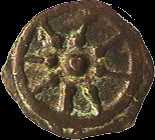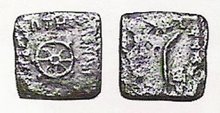Tuesday, August 27, 2013
It is obvious
When I learned that the most profitable year in the history of 'Duesenberg Automobile & Motors Company, Inc' was in 1931 I thought:
"THAT was during the Great Depression following the crash of 1929."
Well, economic 'down turns' only effect the very little people (to paraphrase Leona Helmsley).
John Kenneth Galbraith wrote The Great Crash 1929, an economic history focused in part on the men of the market who brought on the crash, in graceful prose. In his last chapter, he tells us of five major weaknesses in the real economy that made it possible for the disaster to destroy a generation. At the top of his list is the badly unequal distribution of wealth.
He points out that the top 5% of the population earned about one third of all personal income in 1929*. Those figures comport well with the figures from Emanuel Saez and Thomas Piketty, whose IRS data indicates that the top 5% earned about 37% of gross income in 1929. P. 194 (references are to the Penguin Books 1992 ed.). For a discussion of the 2006 figures, see this article.
Productivity increased steadily from 1920 to 1929, but wages and prices were stagnant. P. 192 Costs fell, and profits increased, but how were the wealthy to dispose of the money? The choices were consumption of luxuries (e.g. a Duesenberg) or capital investment. There is only so much that the rich can consume.
If anything happened to reduce the flow of money to capital expenditures, consumer spending could not increase to take its place, and the economy was headed down. There is insufficient evidence, according to Galbraith, to be certain that this was the central cause, but he thinks the explanation is consistent with the observed facts available to him in 1954.
He identifies four other factors:
1. Bad corporate structures. Although the business press praised the businessmen of that day, the fact (P. 195) was that
American enterprise in the twenties had opened its hospitable arms to an exceptional number of swindlers, impostors, and frauds. This, in the long history of such activities, was a kind of flood tide of corporate larceny.
2. Bad banking structure. Galbraith doesn’t think bankers were any worse or better in the 20s than the 50s, but the structure of banks made runs on banks easier and more likely.
3. The balance of trade. The US was a creditor to most of the world. As the decade wore on, that status increased every year. High US tariffs made it difficult for other nations to balance their imports from the US with exports to the US, so accounts were settled in transfers of gold, or in shaky loans, like the loans made by National City Bank (predecessor, somehow, of CitiGroup) to Peru. P. 198-9. As this became more difficult, other countries had to reduce imports from the US, which caused strains in the economy, particularly agriculture.
4. Incompetent economic advice. From p. 200:
The economic advisors of the day had both the unanimity and authority to force the leaders of both political parties to disavow all the available steps to check deflation and depression.
Two and three seem unlikely culprits this time. It looks to me like a good case can be made for one, with all the money lost by the great geniuses of Wall Street and their counterparts in the banking and other businesses. What kind of country did our corporate masters think would be left when they exported all the decent jobs to other nations? Actually, it doesn’t affect them at the top. They just whine that they are being put upon by the great unwashed, and have to pretend they aren’t really all that different from you and me. When Newsweek notices it, it must be obvious.
As to four, judging competence isn’t easy. What do you think about the economic crowd? If you liked them pulling the strings for Bush, you’ll love them in their shape-shifted form manipulating Obama, including their supporters in the money party (e.g. the top 0.1%), the Blue Dogs and the rump of the Republican party. John Kenneth Galbraith would recognize these people too.
after an article published HERE
In today's 'world economy,' the top 5% of the population earn about 93% of all personal income! 95% of the population grovels over 5% of the wealth - the trickle down crumbs. To be fair, within the U.S.A., 5% earn 47% of all personal income! And that excludes many of the entitlement crowd* who live on investments alone (and your money specifically).
There are solid economic arguments for the bad consequences of unequal distribution of the wealth (which the USA has been consistently moving toward since Reagan).
*the entitlement crowd* consists of the ultra rich who find ways - like the story of home ownership in America - to make the poorer classes subsidize their vast wealth.
Subscribe to:
Comments (Atom)













